 Image 1 of 15
Image 1 of 15

 Image 2 of 15
Image 2 of 15

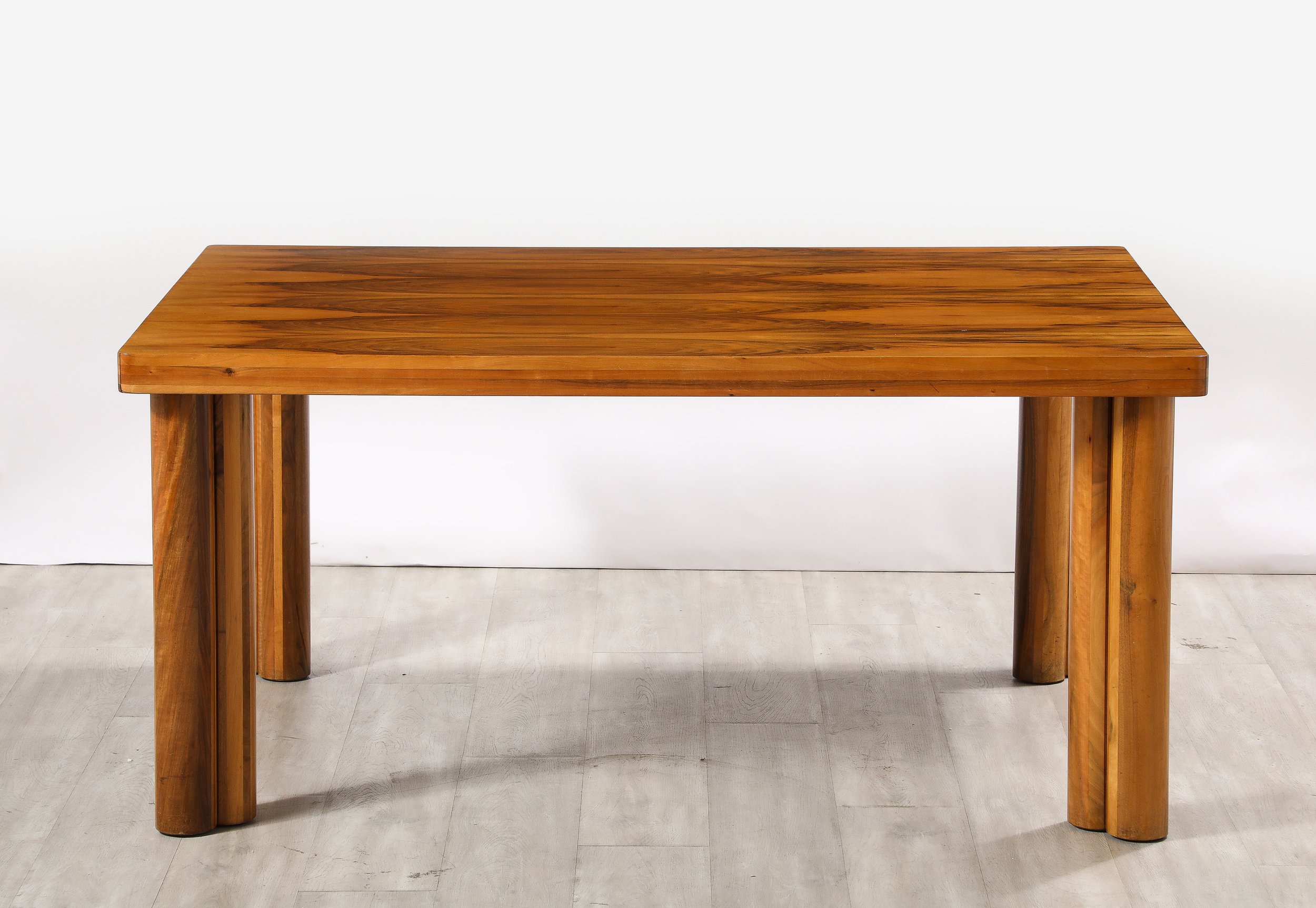 Image 3 of 15
Image 3 of 15

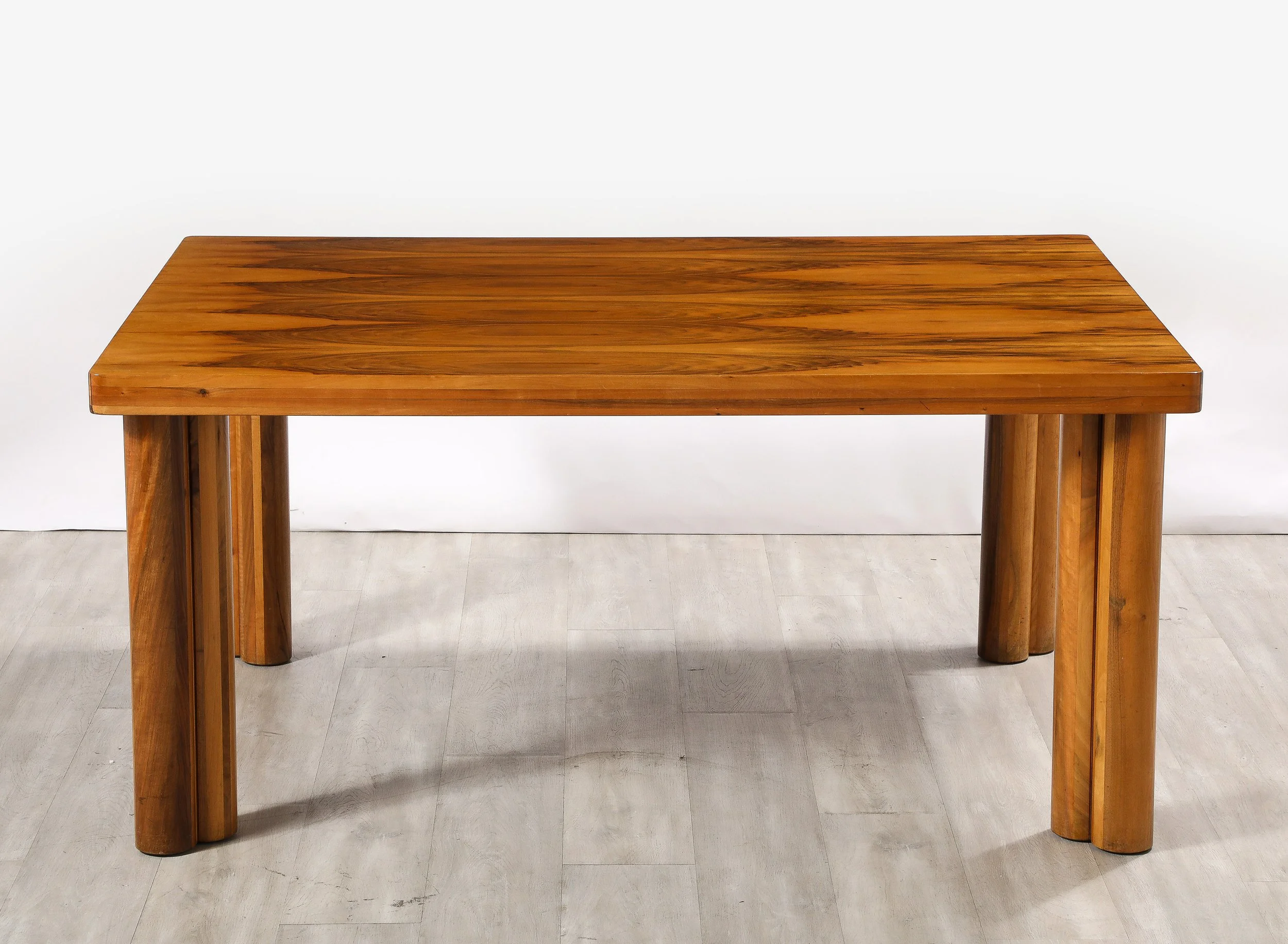 Image 4 of 15
Image 4 of 15

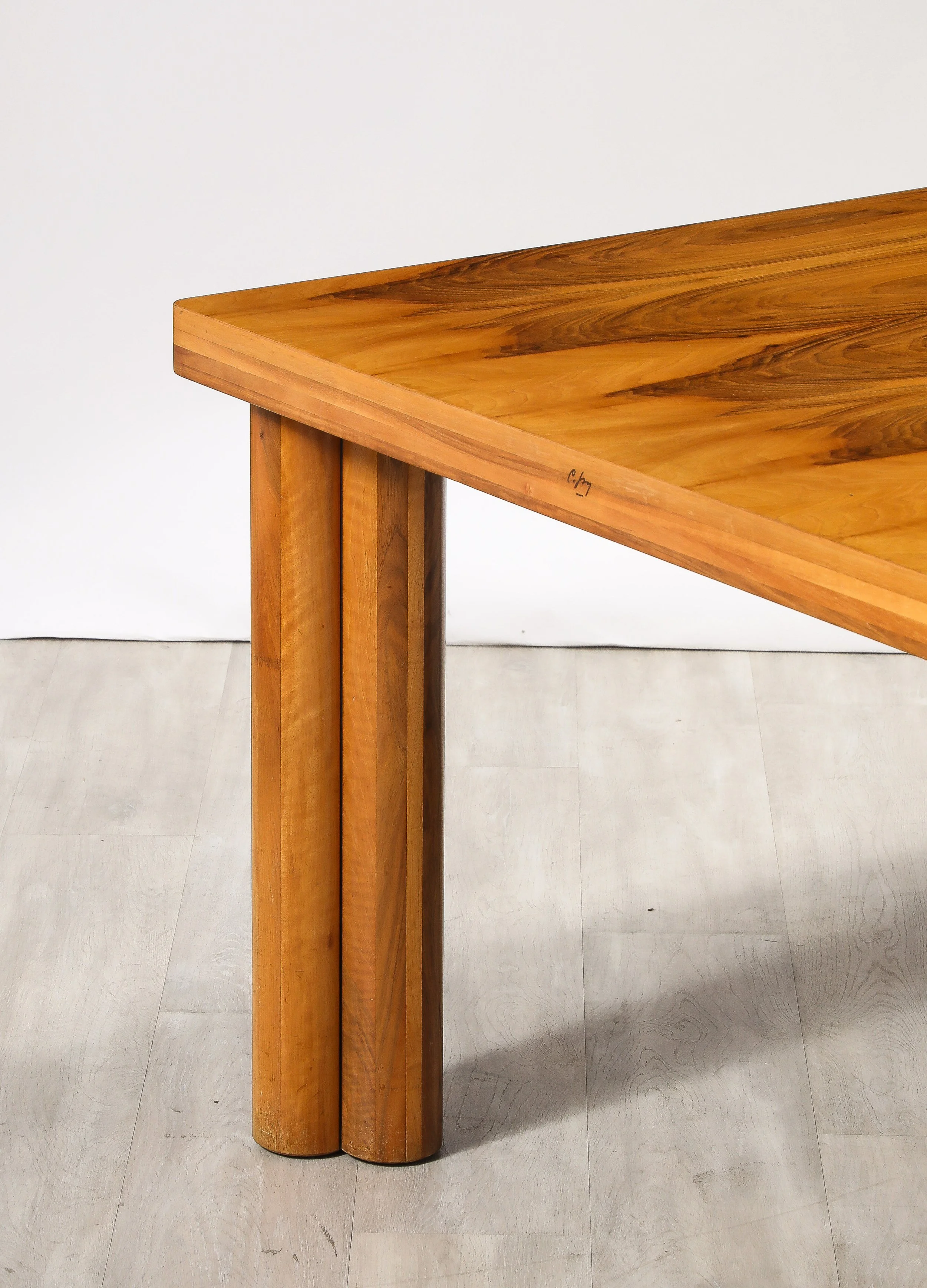 Image 5 of 15
Image 5 of 15

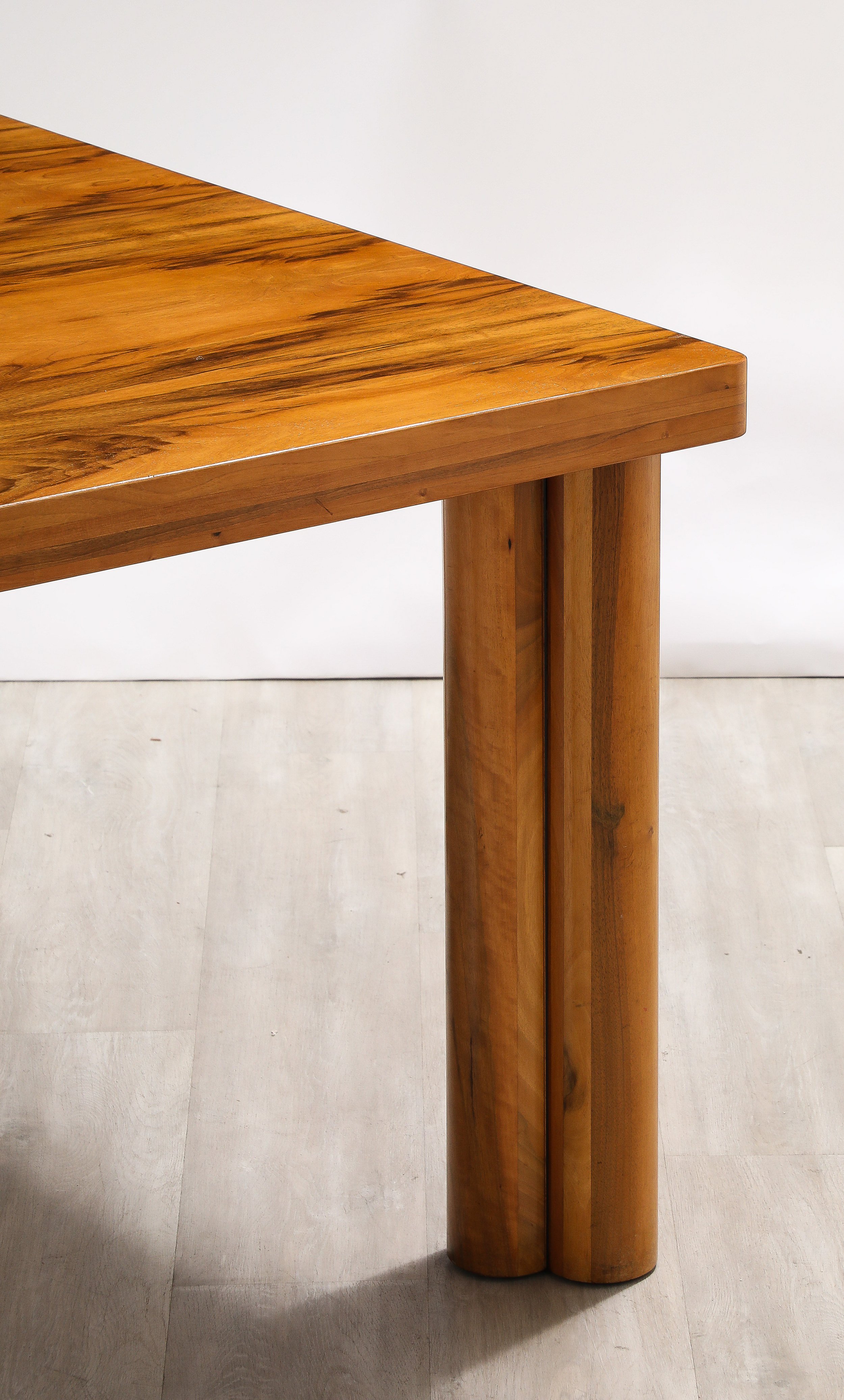 Image 6 of 15
Image 6 of 15

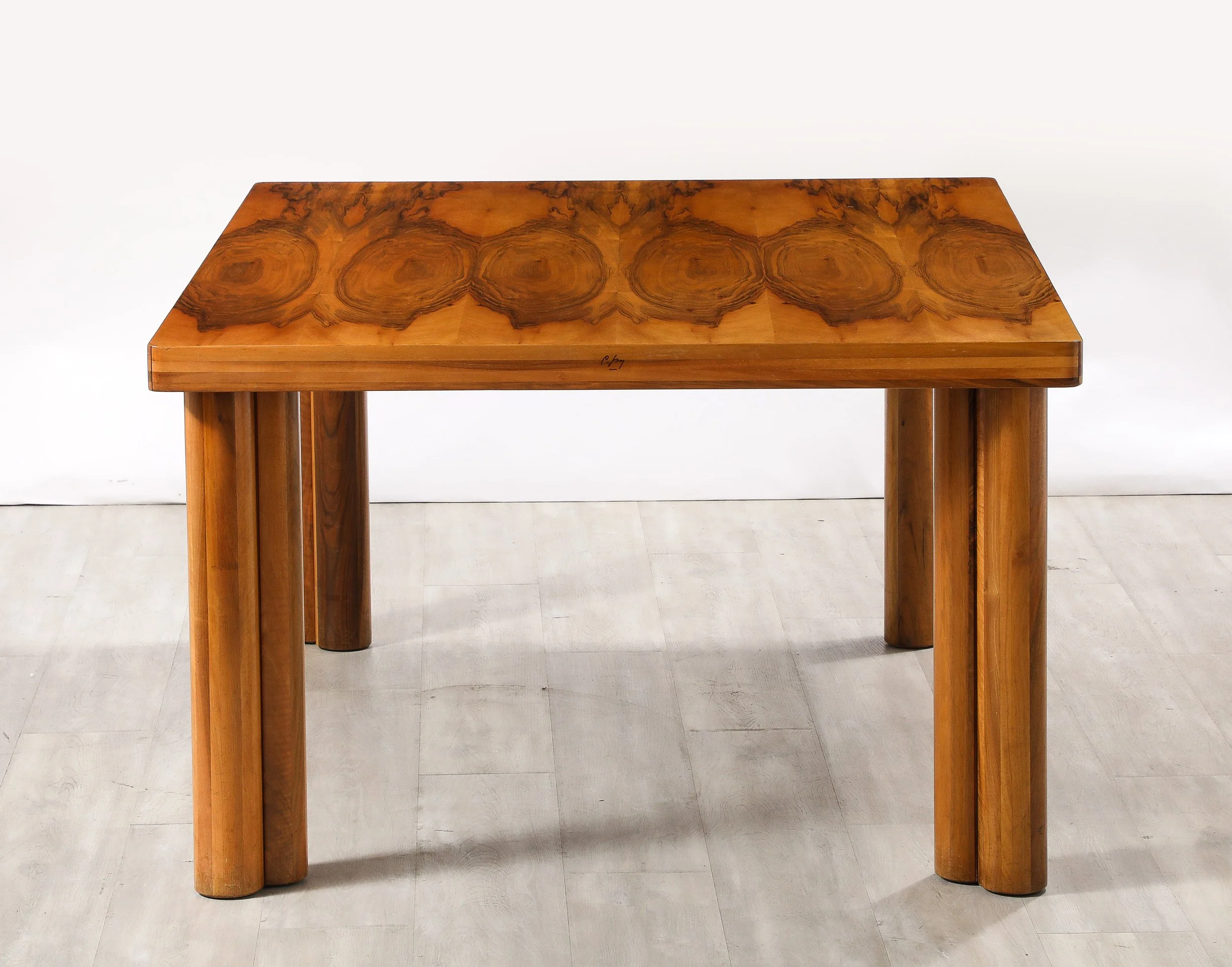 Image 7 of 15
Image 7 of 15

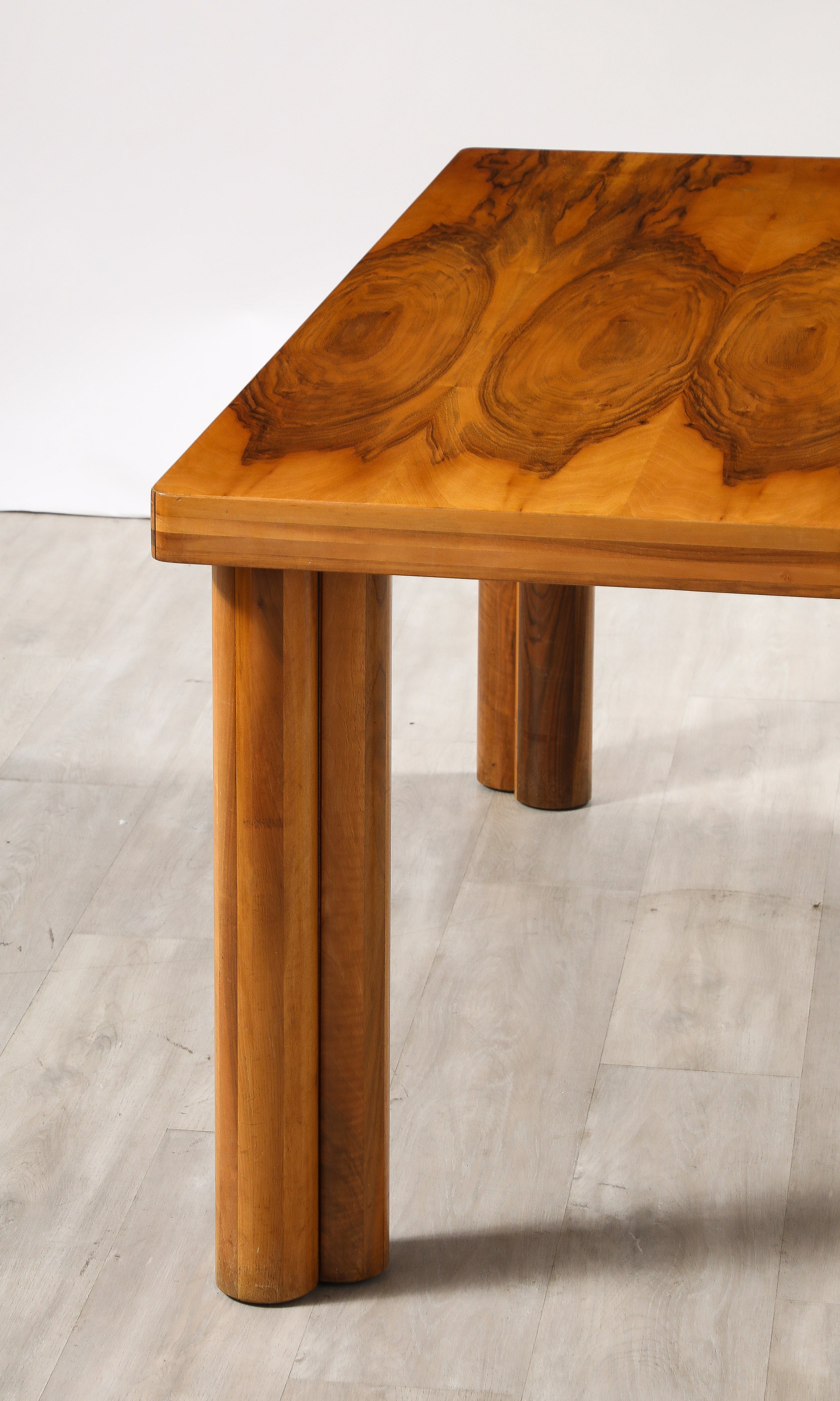 Image 8 of 15
Image 8 of 15

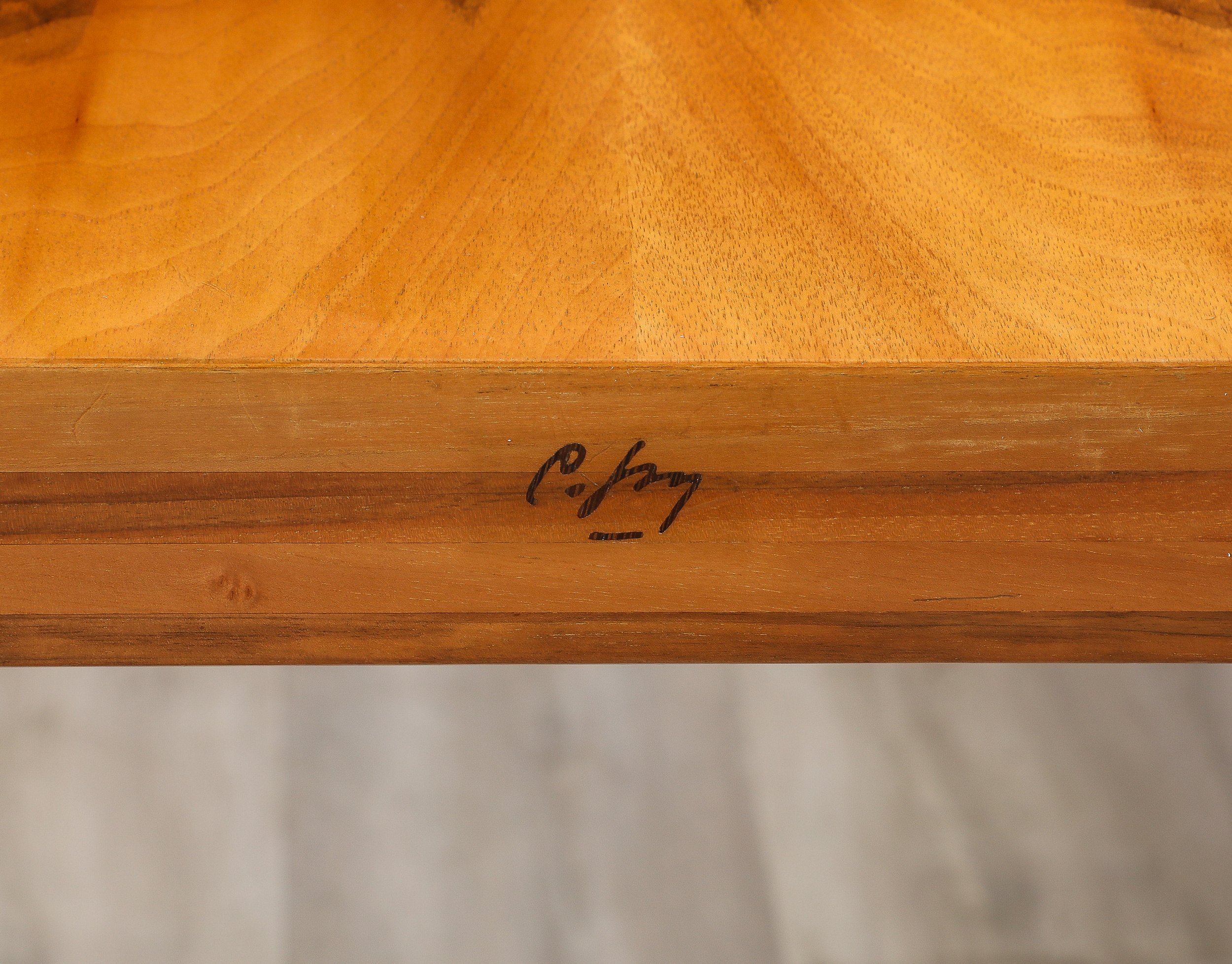 Image 9 of 15
Image 9 of 15

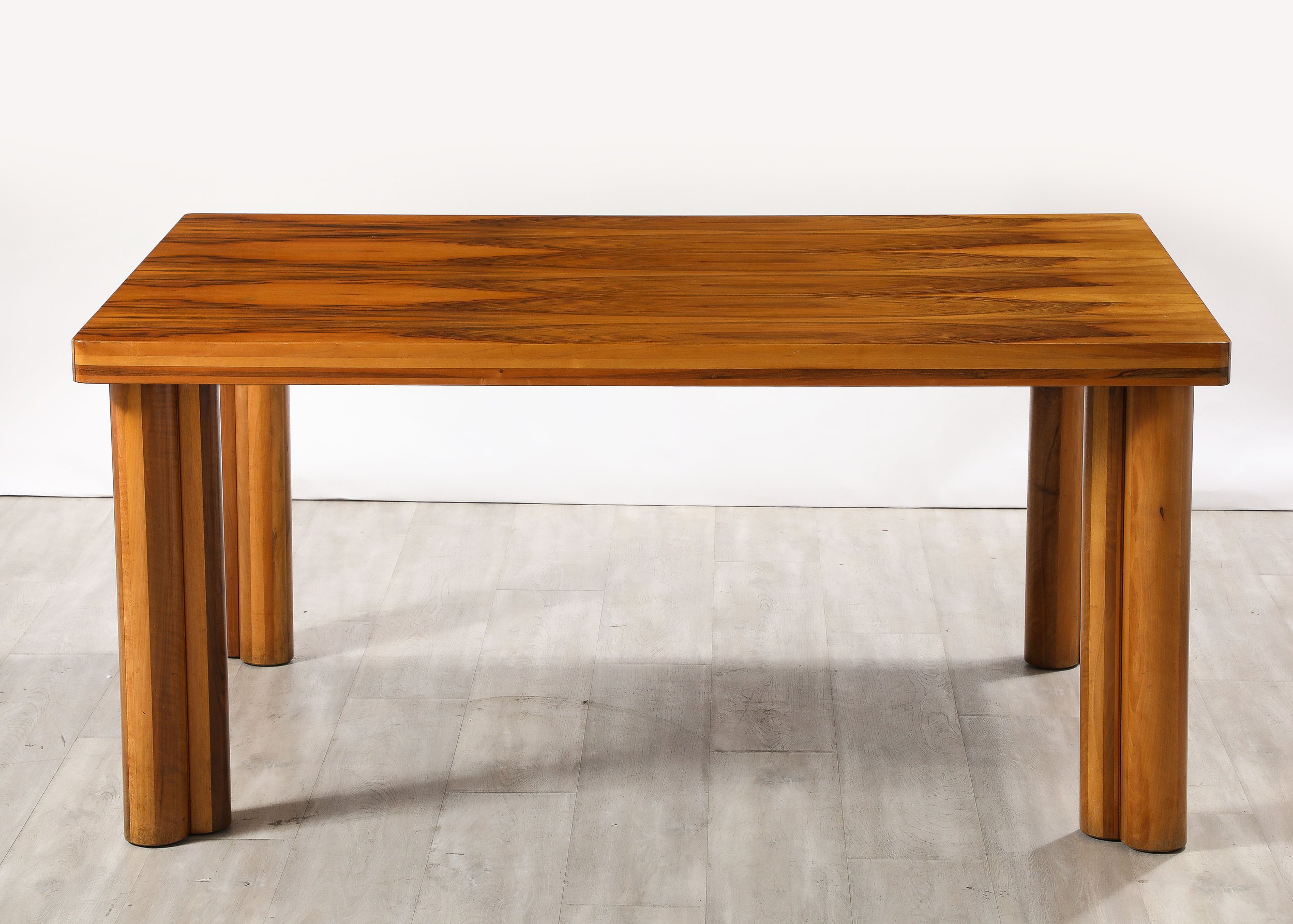 Image 10 of 15
Image 10 of 15

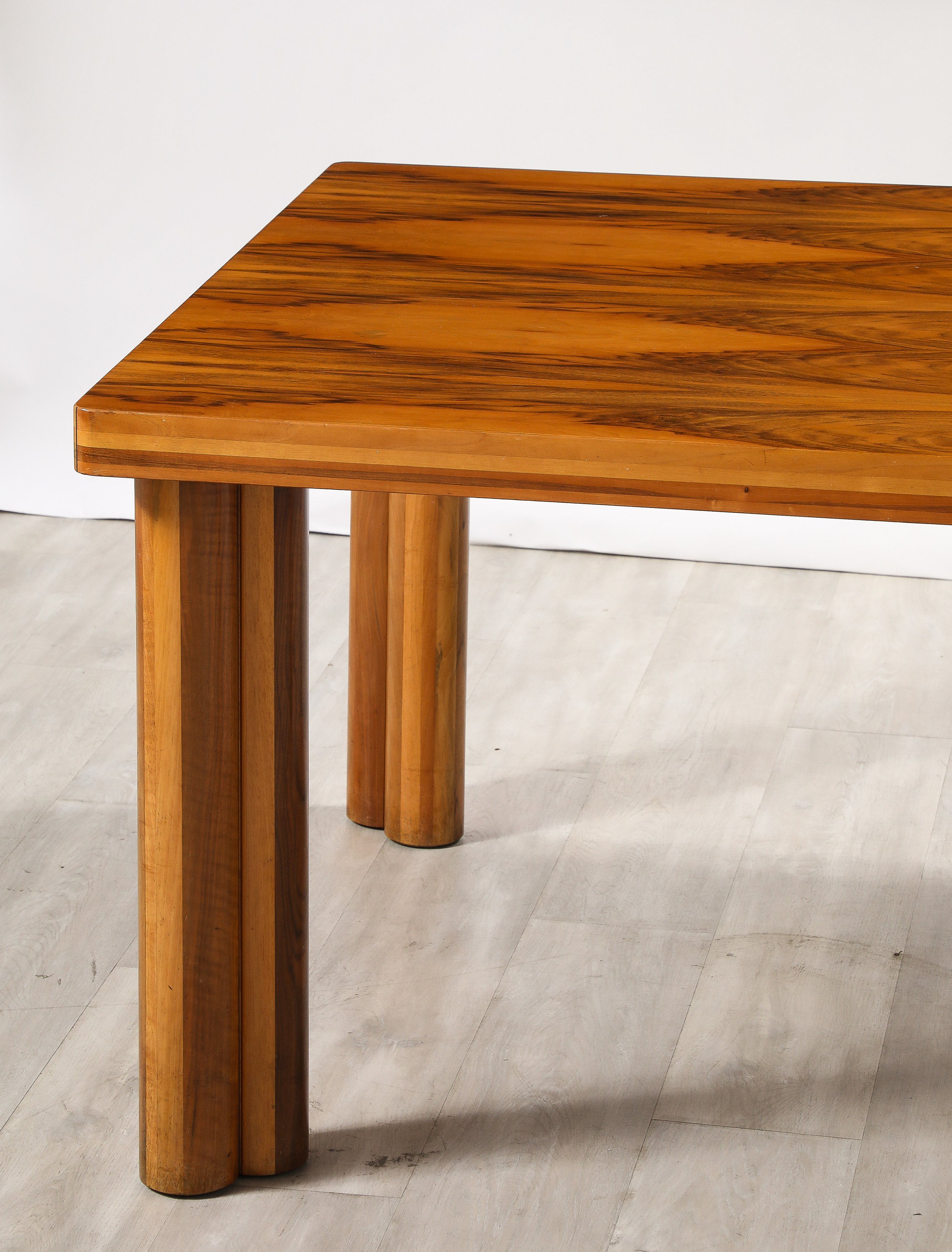 Image 11 of 15
Image 11 of 15

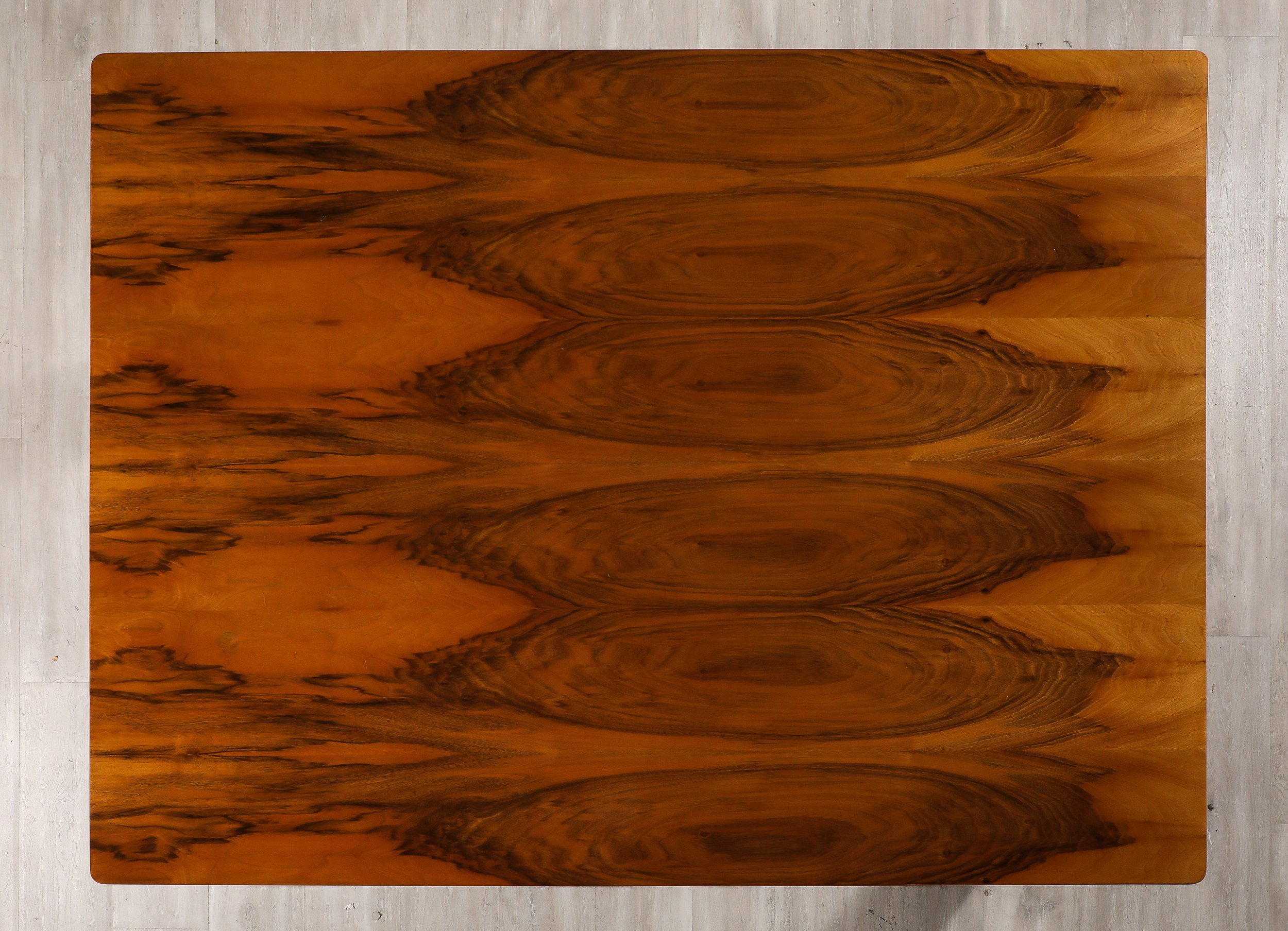 Image 12 of 15
Image 12 of 15

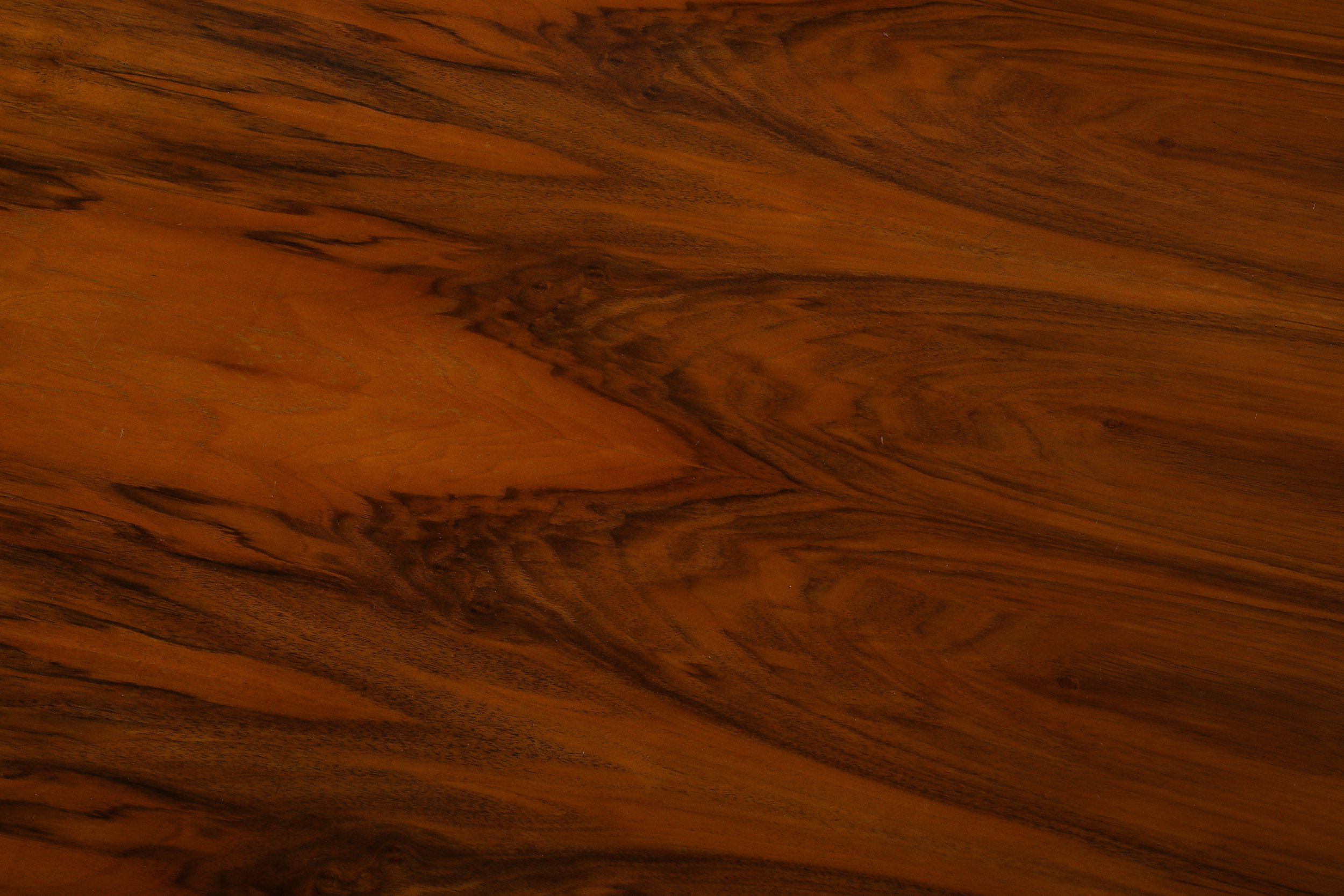 Image 13 of 15
Image 13 of 15

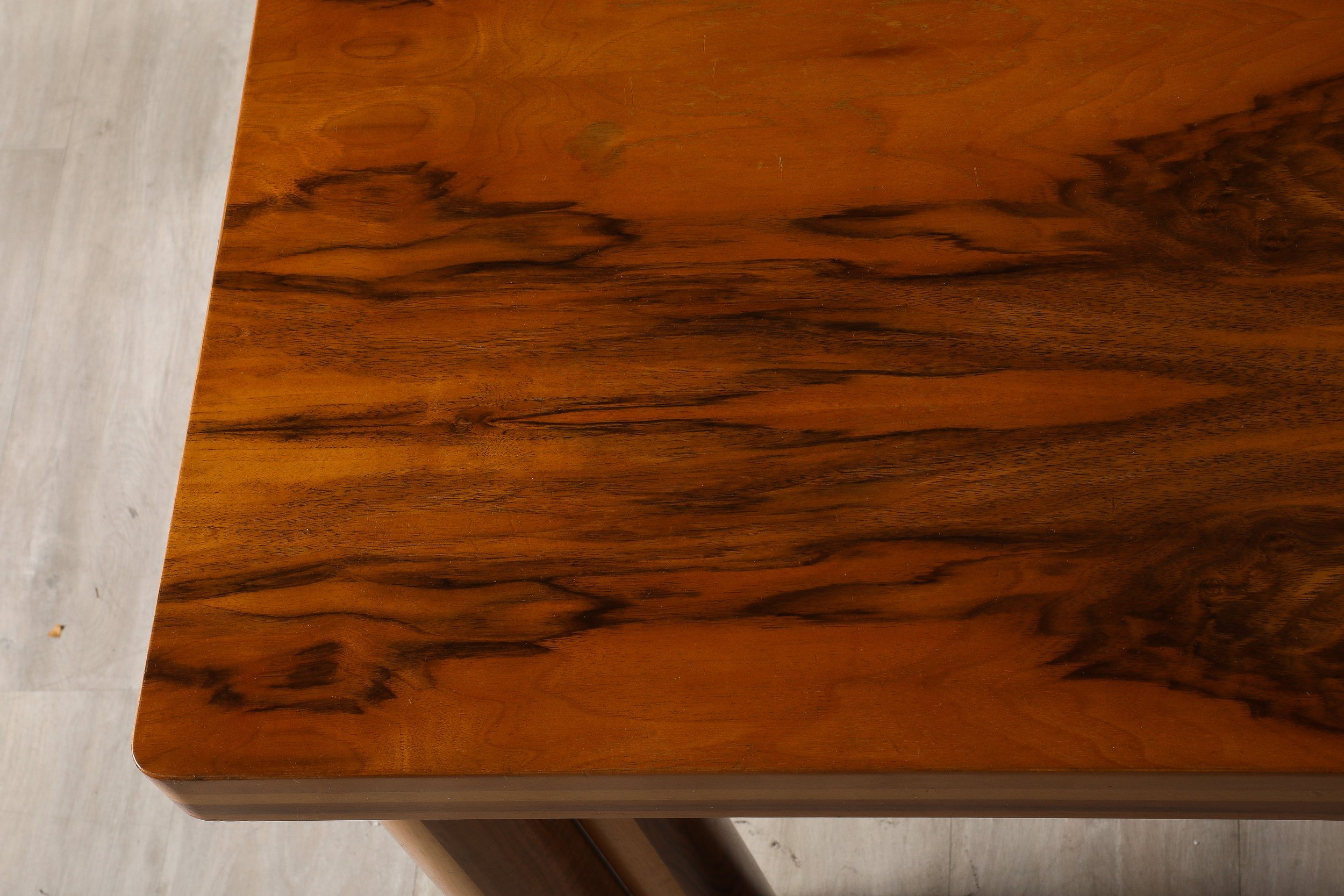 Image 14 of 15
Image 14 of 15

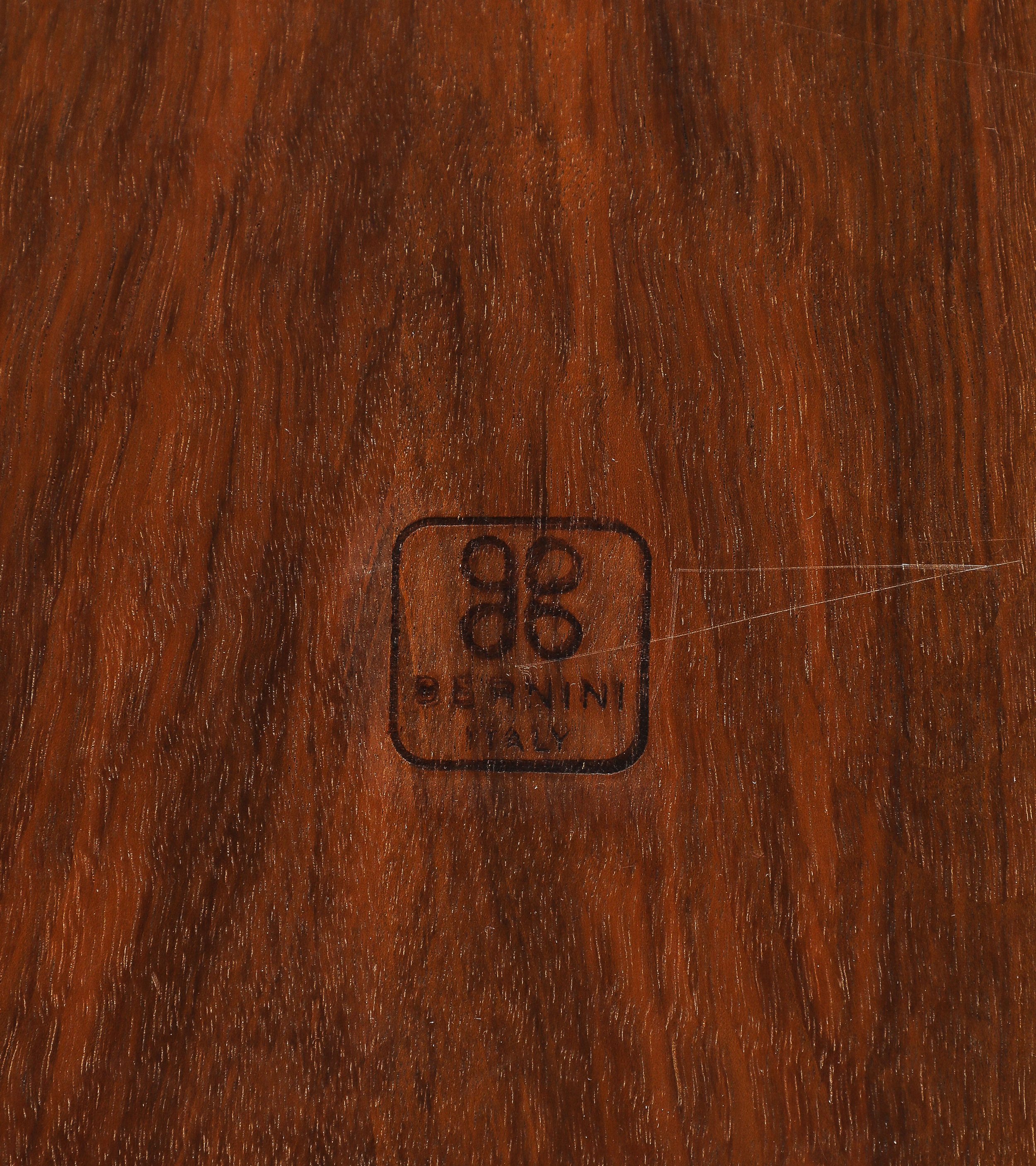 Image 15 of 15
Image 15 of 15
















Carlo Scarpa for Bernini 'Scuderia' Walnut Dining Table, circa 1977
Carlo Scarpa, 'Scuderia' Walnut Dining Table, manufactured by Bernini in 1977 Of solid walnut structure the grain of the wood is spectacular; with sculpted and canted corner legs and of very simple and graceful shape. This is likely one of the last pieces which Scarpa designed, as he visited Japan in 1978 and died unexpectedly due to a fall. Scarpa was heavily influenced by his native Venetian culture, the materials, and landscapes of the city particularly appealing to him. Later in his career, he combined his lifelong love for Venice with an infatuation of Japanese culture and modernism. His mixed medium of works, including furniture and glass, reflects his passion and interest in history, regionalism, and craftsmanship; his architecture reflects a deep awareness of history and masterful attention to detail, combining ancient craft skills with a modern aesthetic. Carlo Scarpa, (1906-1978) designed the table to restore the stable of Villa Valmarana in Vicenza in 1972. Villa Valmarana ai Nani is composed of three buildings, the Palazzina (Owners' Residence) built in 1669, the Foresteria (Guest-House ) and the Scuderia (Stables) built in 1720. They are embraced by a large historical park with rose gardens, a "giardino all'italiana" with its open air theater and well, a double hornbeams alley terminating with a statue of Neptune. The Villa takes its name from the statues of the 17 stone dwarfs, originally placed in the garden, now on the walls surrounding the house and which inspired the Villa's legend of Princess Layana. The dwarfs were probably sculpted by Francesco Uliaco, most likely from the drawings by Giandomenico Tiepolo. The Valmarana family still lives in the Villa, which is universally considered the highest expression of the painting of the eighteenth century and one of the highest examples of the Tiepolo's genius.
Carlo Scarpa, 'Scuderia' Walnut Dining Table, manufactured by Bernini in 1977
Stamped and Signed.
Size: 28" high x 60 1/2" wide x 45 1/2" deep
Literature: B. Albertini, S. Bagnoli, “Carlo Scarpa. Architecture in detail”, Jaca Book, (1988). C. Sonego , “Carlo Scarpa and design”, in M. Manzelle (ed. by) Ca Skira, (2002). Pordenone “Carlo Scarpa designer”, ed. Image Library, (1984). Carlo Scarpa Sandro Bagnoli Design for Dino Gavina, edited by Sandro Bagnoli, Alba Di Lieto, Veneto Region, Municipality of Verona, Silvana Editoriale, p. 119, (2014).
Carlo Scarpa, 'Scuderia' Walnut Dining Table, manufactured by Bernini in 1977 Of solid walnut structure the grain of the wood is spectacular; with sculpted and canted corner legs and of very simple and graceful shape. This is likely one of the last pieces which Scarpa designed, as he visited Japan in 1978 and died unexpectedly due to a fall. Scarpa was heavily influenced by his native Venetian culture, the materials, and landscapes of the city particularly appealing to him. Later in his career, he combined his lifelong love for Venice with an infatuation of Japanese culture and modernism. His mixed medium of works, including furniture and glass, reflects his passion and interest in history, regionalism, and craftsmanship; his architecture reflects a deep awareness of history and masterful attention to detail, combining ancient craft skills with a modern aesthetic. Carlo Scarpa, (1906-1978) designed the table to restore the stable of Villa Valmarana in Vicenza in 1972. Villa Valmarana ai Nani is composed of three buildings, the Palazzina (Owners' Residence) built in 1669, the Foresteria (Guest-House ) and the Scuderia (Stables) built in 1720. They are embraced by a large historical park with rose gardens, a "giardino all'italiana" with its open air theater and well, a double hornbeams alley terminating with a statue of Neptune. The Villa takes its name from the statues of the 17 stone dwarfs, originally placed in the garden, now on the walls surrounding the house and which inspired the Villa's legend of Princess Layana. The dwarfs were probably sculpted by Francesco Uliaco, most likely from the drawings by Giandomenico Tiepolo. The Valmarana family still lives in the Villa, which is universally considered the highest expression of the painting of the eighteenth century and one of the highest examples of the Tiepolo's genius.
Carlo Scarpa, 'Scuderia' Walnut Dining Table, manufactured by Bernini in 1977
Stamped and Signed.
Size: 28" high x 60 1/2" wide x 45 1/2" deep
Literature: B. Albertini, S. Bagnoli, “Carlo Scarpa. Architecture in detail”, Jaca Book, (1988). C. Sonego , “Carlo Scarpa and design”, in M. Manzelle (ed. by) Ca Skira, (2002). Pordenone “Carlo Scarpa designer”, ed. Image Library, (1984). Carlo Scarpa Sandro Bagnoli Design for Dino Gavina, edited by Sandro Bagnoli, Alba Di Lieto, Veneto Region, Municipality of Verona, Silvana Editoriale, p. 119, (2014).
Carlo Scarpa, 'Scuderia' Walnut Dining Table, manufactured by Bernini in 1977 Of solid walnut structure the grain of the wood is spectacular; with sculpted and canted corner legs and of very simple and graceful shape. This is likely one of the last pieces which Scarpa designed, as he visited Japan in 1978 and died unexpectedly due to a fall. Scarpa was heavily influenced by his native Venetian culture, the materials, and landscapes of the city particularly appealing to him. Later in his career, he combined his lifelong love for Venice with an infatuation of Japanese culture and modernism. His mixed medium of works, including furniture and glass, reflects his passion and interest in history, regionalism, and craftsmanship; his architecture reflects a deep awareness of history and masterful attention to detail, combining ancient craft skills with a modern aesthetic. Carlo Scarpa, (1906-1978) designed the table to restore the stable of Villa Valmarana in Vicenza in 1972. Villa Valmarana ai Nani is composed of three buildings, the Palazzina (Owners' Residence) built in 1669, the Foresteria (Guest-House ) and the Scuderia (Stables) built in 1720. They are embraced by a large historical park with rose gardens, a "giardino all'italiana" with its open air theater and well, a double hornbeams alley terminating with a statue of Neptune. The Villa takes its name from the statues of the 17 stone dwarfs, originally placed in the garden, now on the walls surrounding the house and which inspired the Villa's legend of Princess Layana. The dwarfs were probably sculpted by Francesco Uliaco, most likely from the drawings by Giandomenico Tiepolo. The Valmarana family still lives in the Villa, which is universally considered the highest expression of the painting of the eighteenth century and one of the highest examples of the Tiepolo's genius.
Carlo Scarpa, 'Scuderia' Walnut Dining Table, manufactured by Bernini in 1977
Stamped and Signed.
Size: 28" high x 60 1/2" wide x 45 1/2" deep
Literature: B. Albertini, S. Bagnoli, “Carlo Scarpa. Architecture in detail”, Jaca Book, (1988). C. Sonego , “Carlo Scarpa and design”, in M. Manzelle (ed. by) Ca Skira, (2002). Pordenone “Carlo Scarpa designer”, ed. Image Library, (1984). Carlo Scarpa Sandro Bagnoli Design for Dino Gavina, edited by Sandro Bagnoli, Alba Di Lieto, Veneto Region, Municipality of Verona, Silvana Editoriale, p. 119, (2014).
